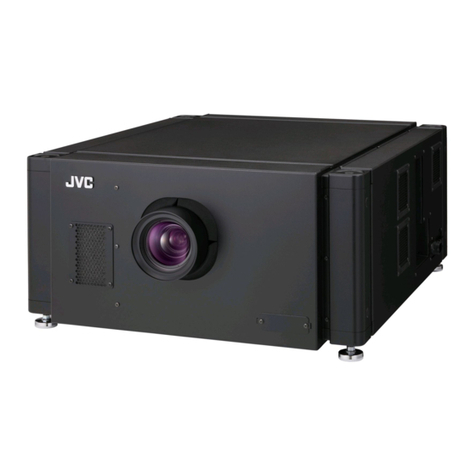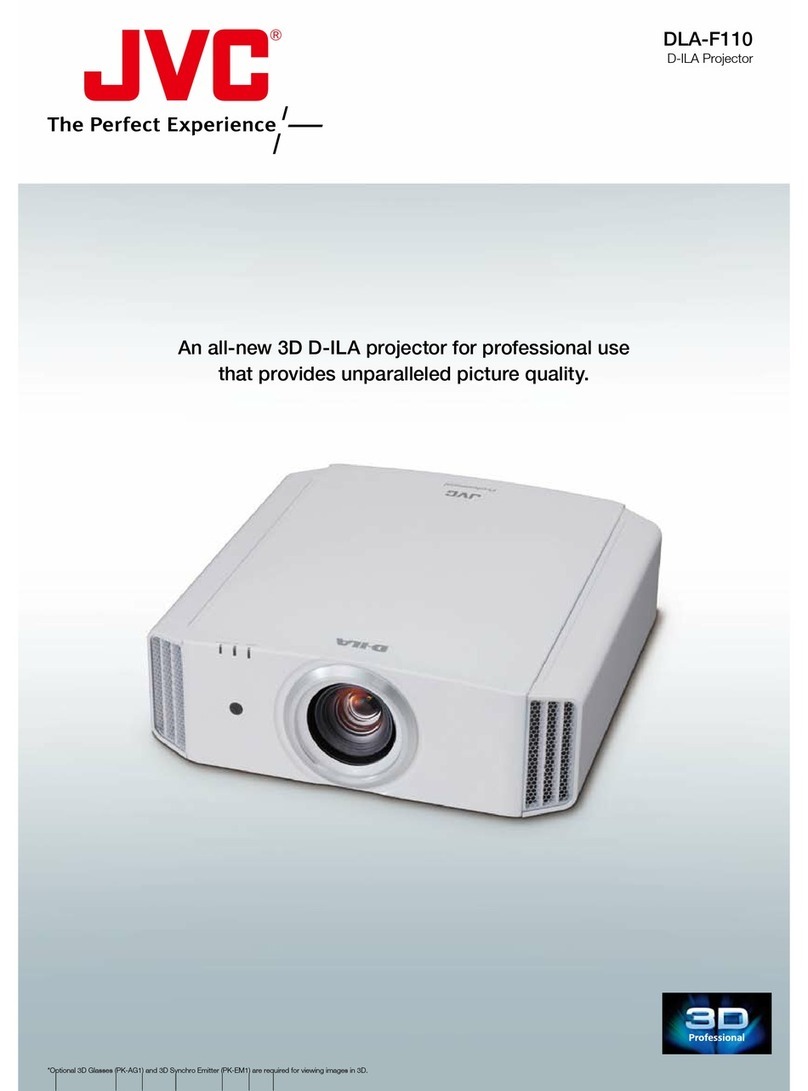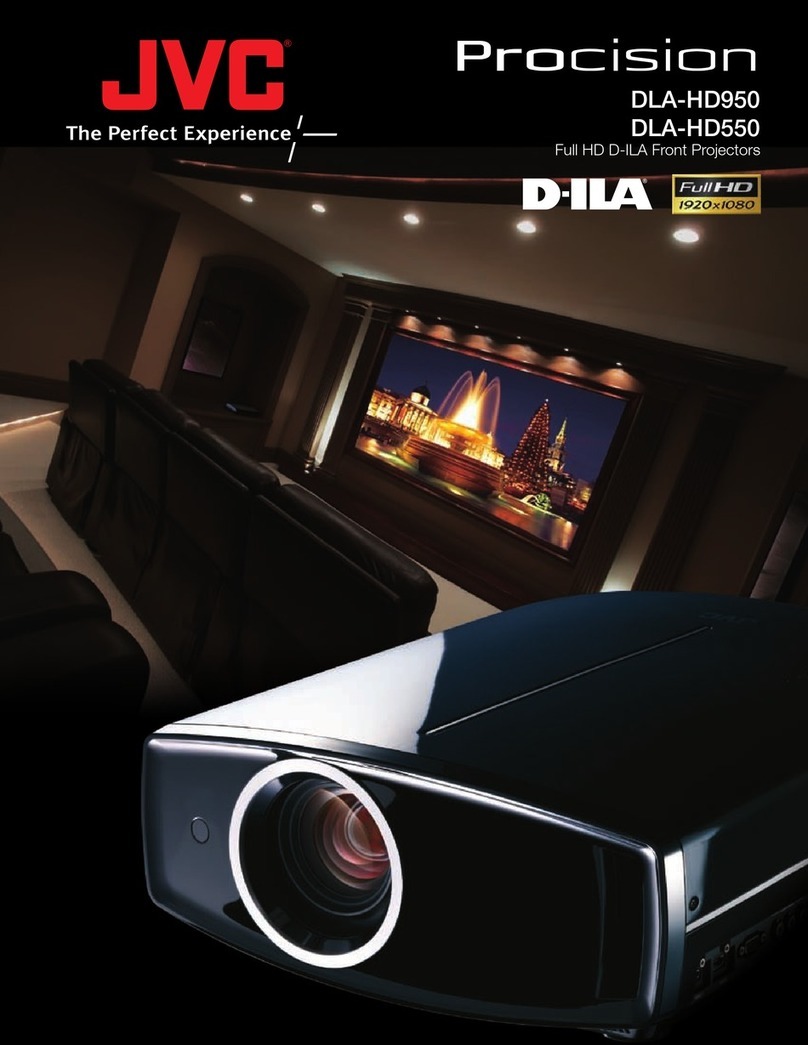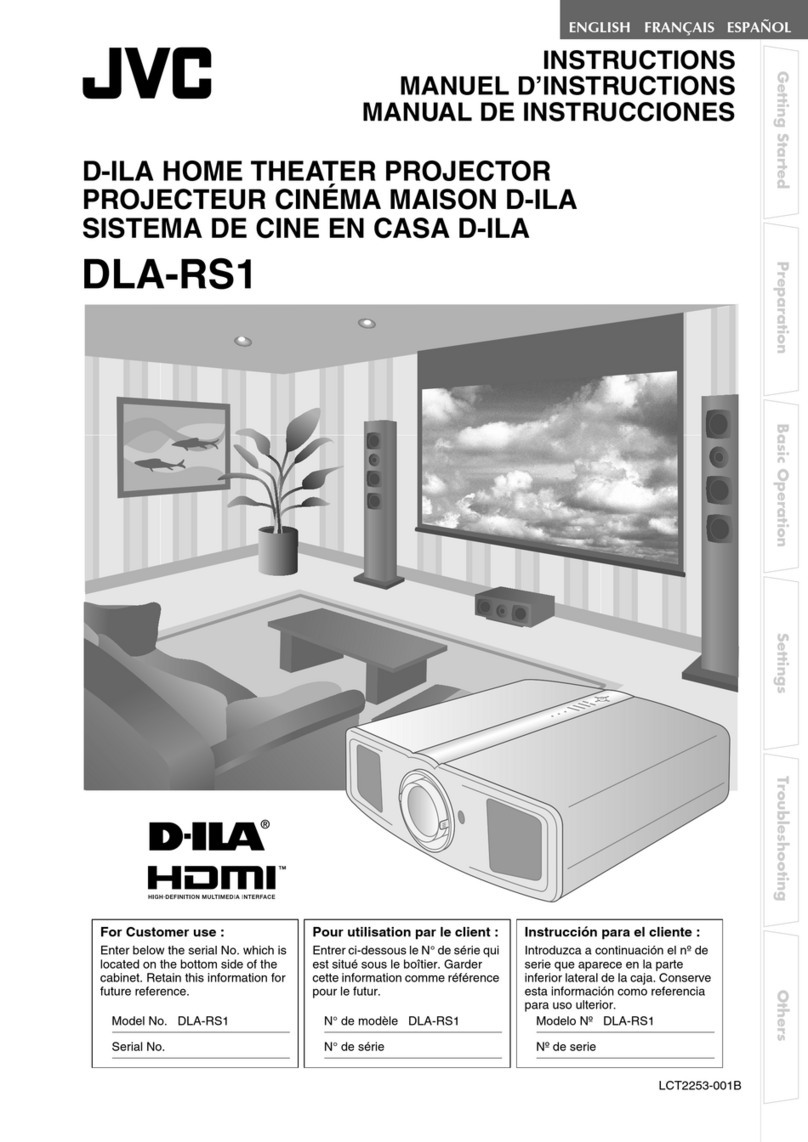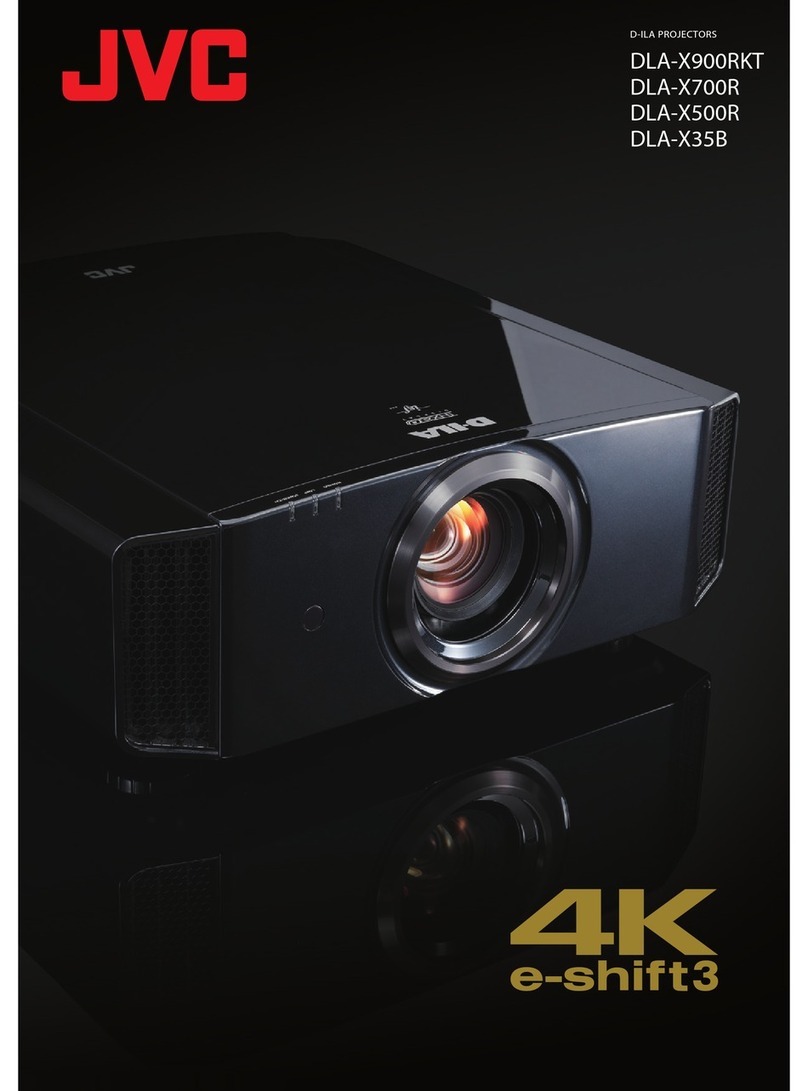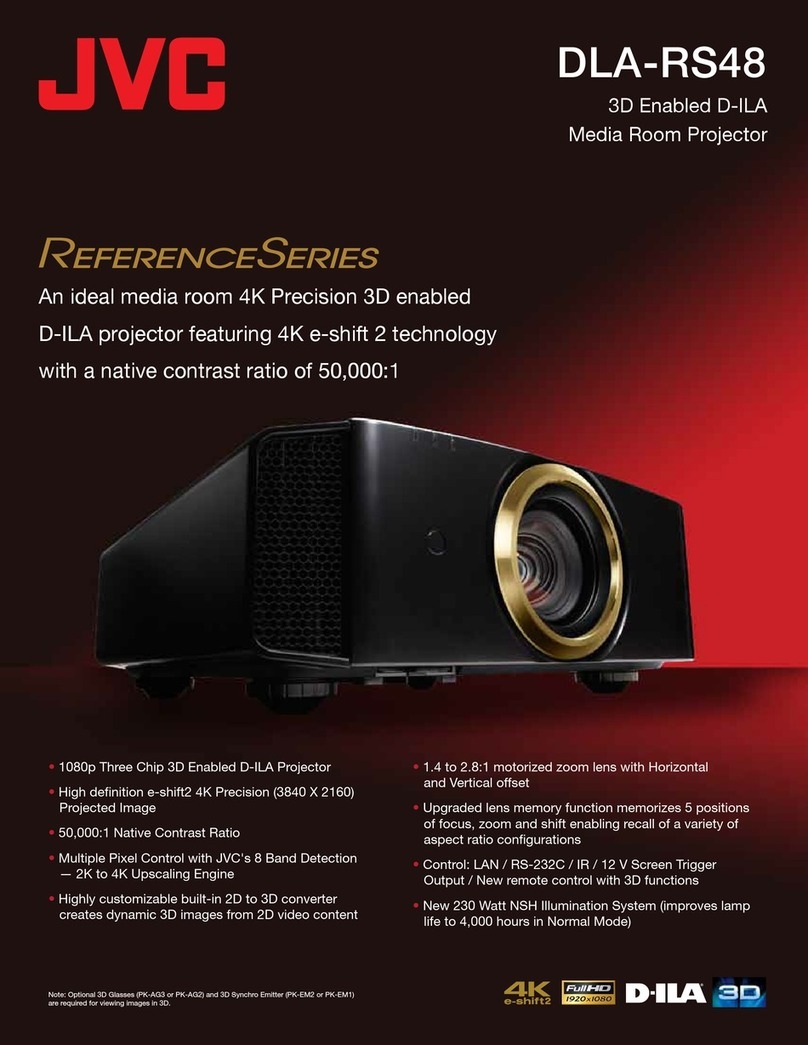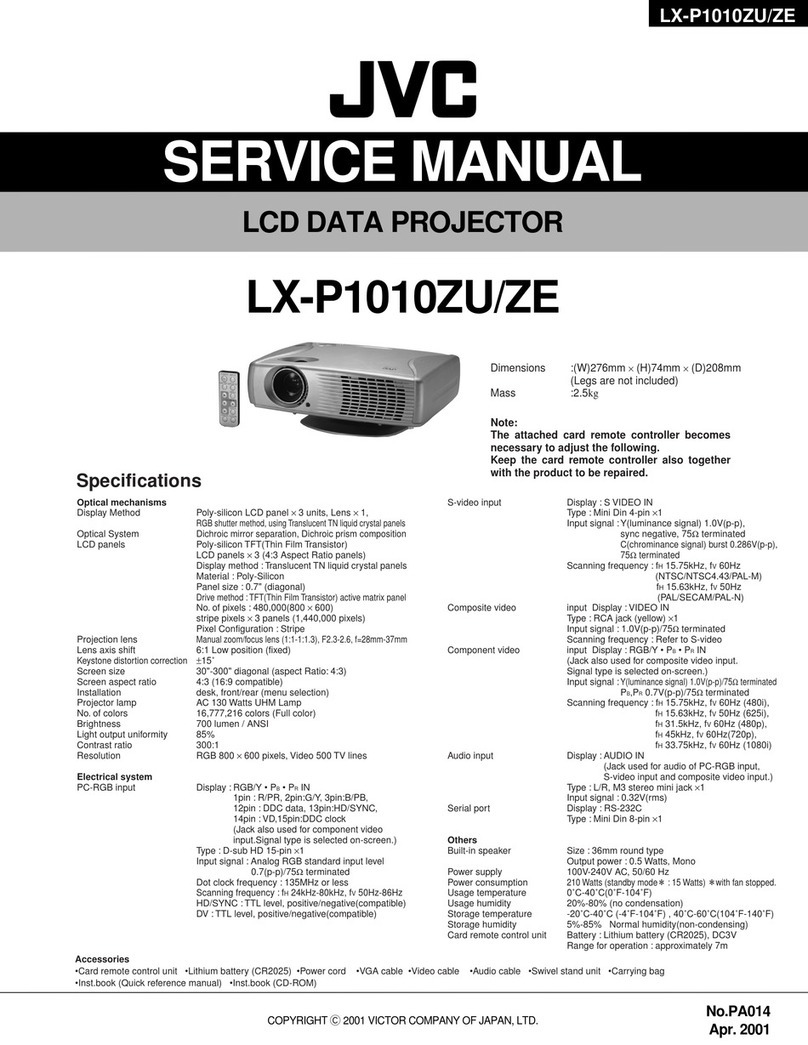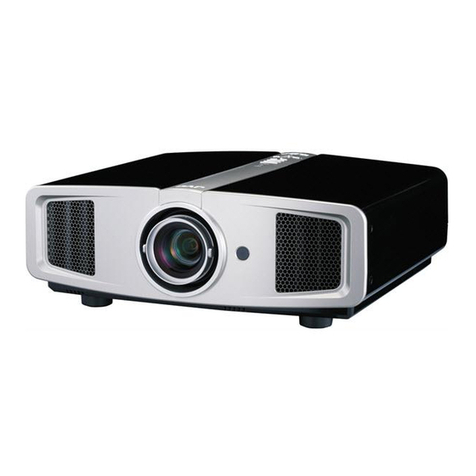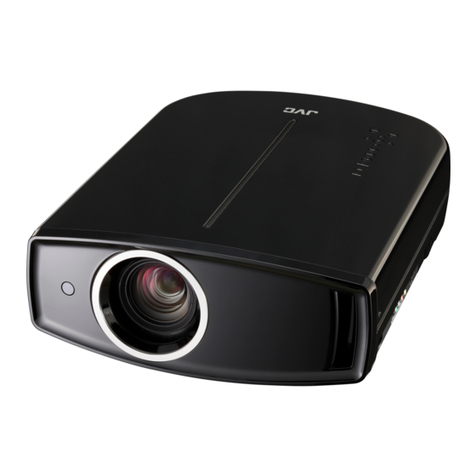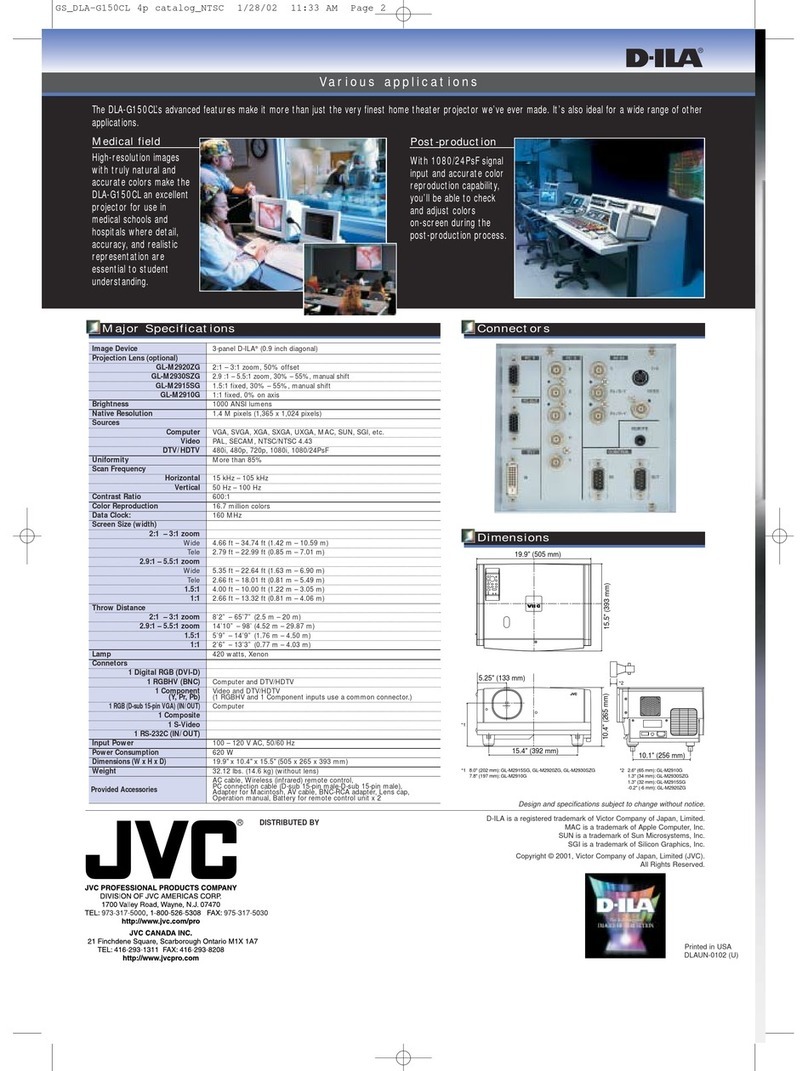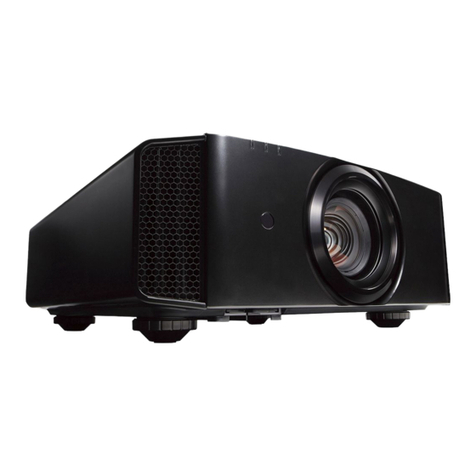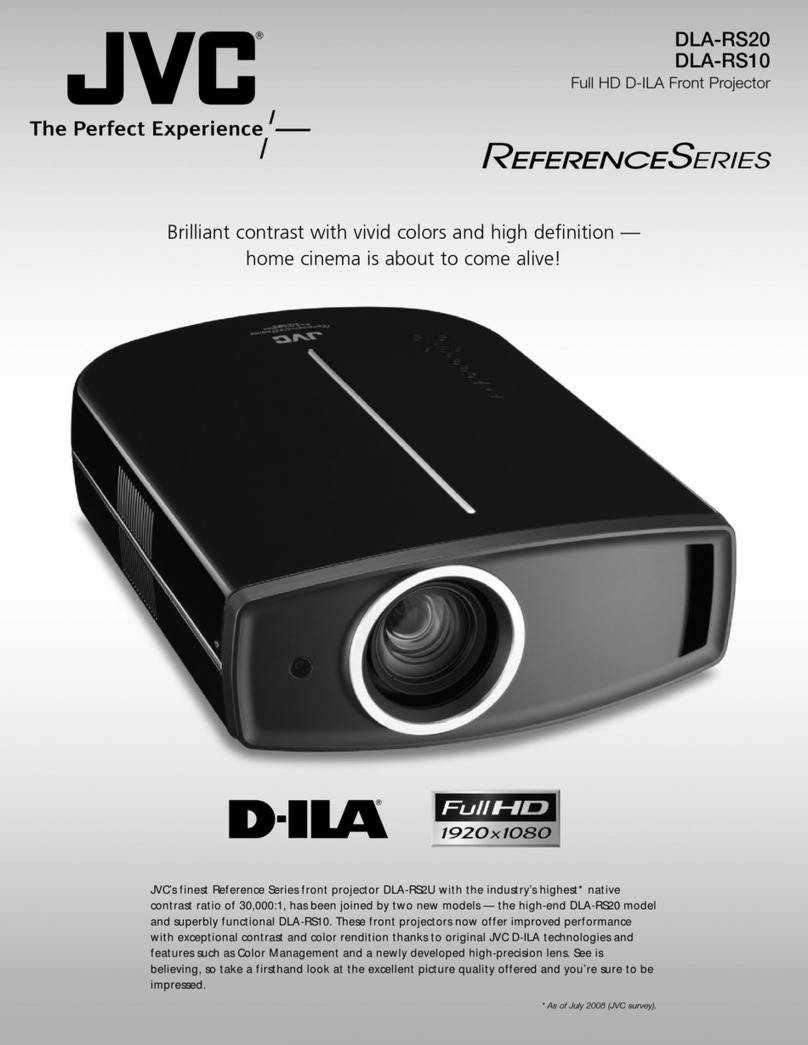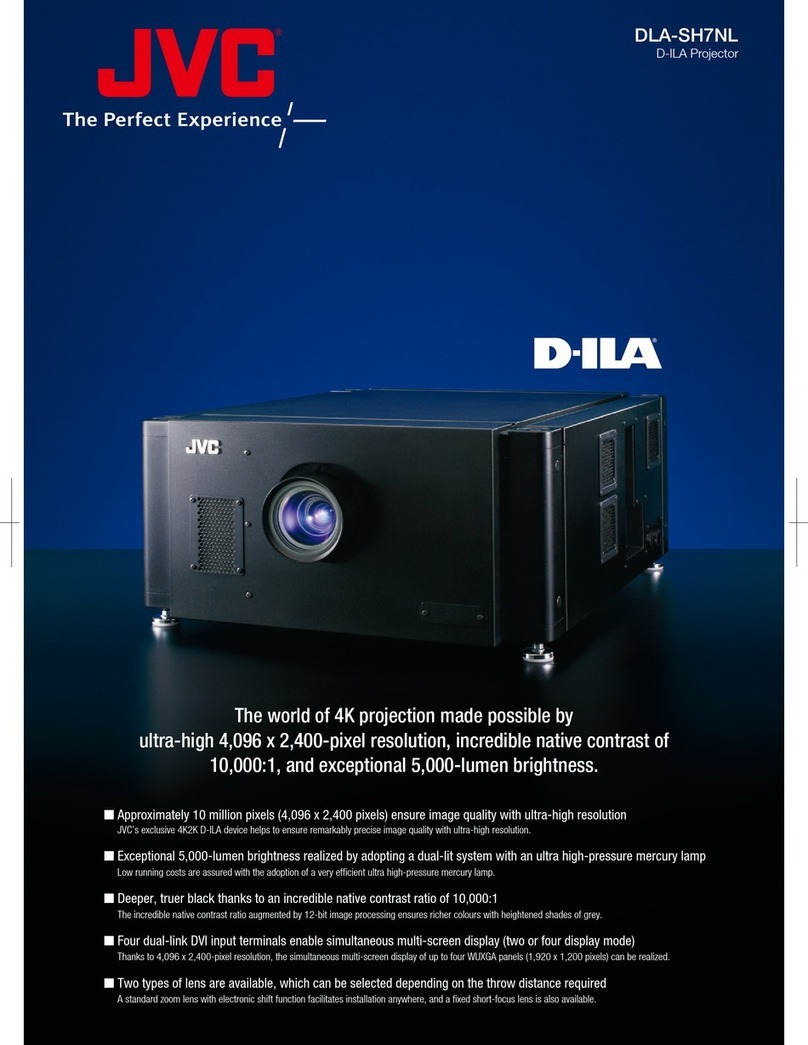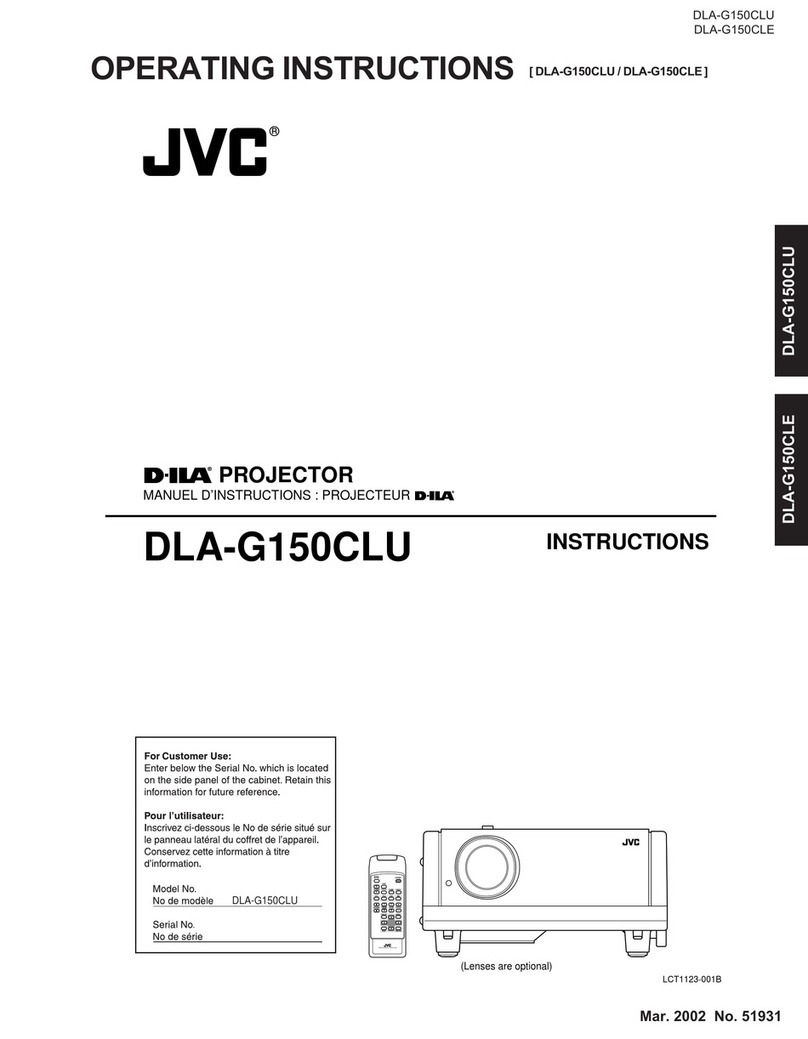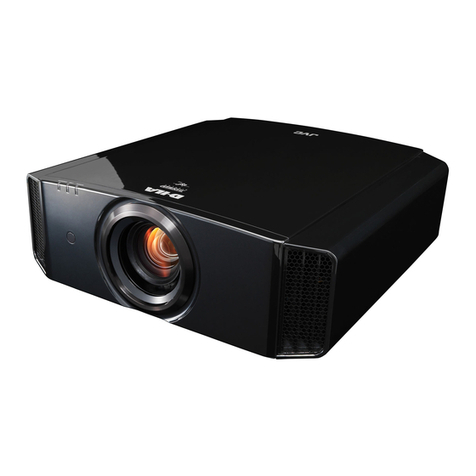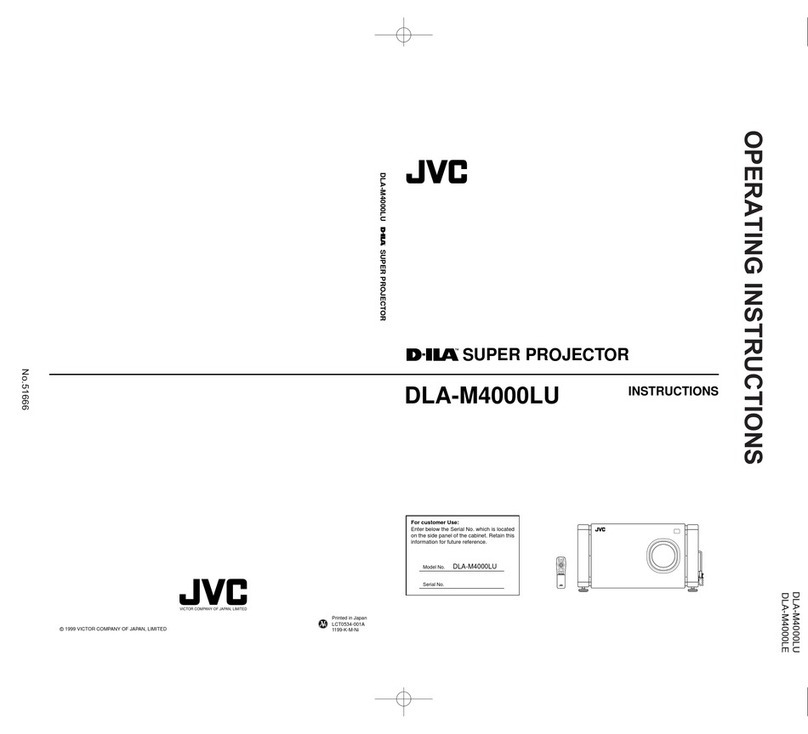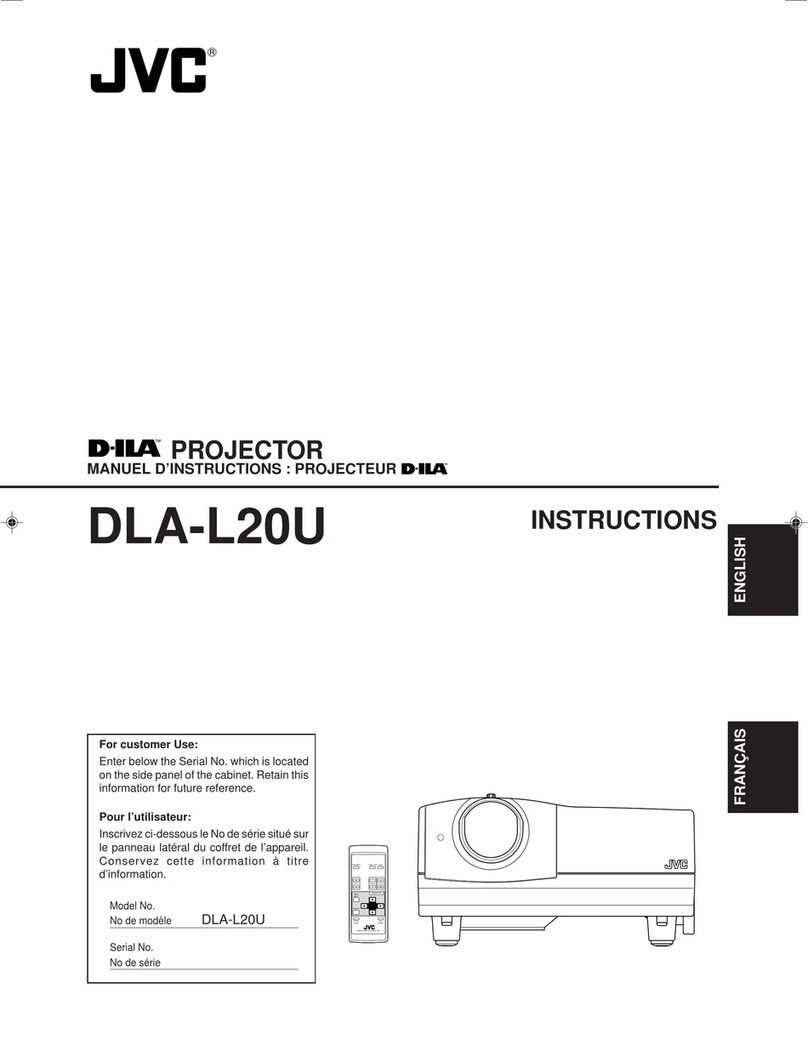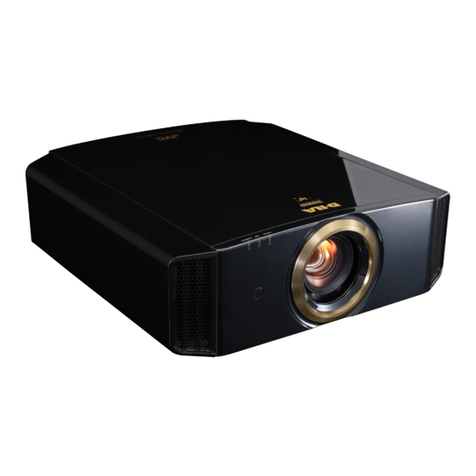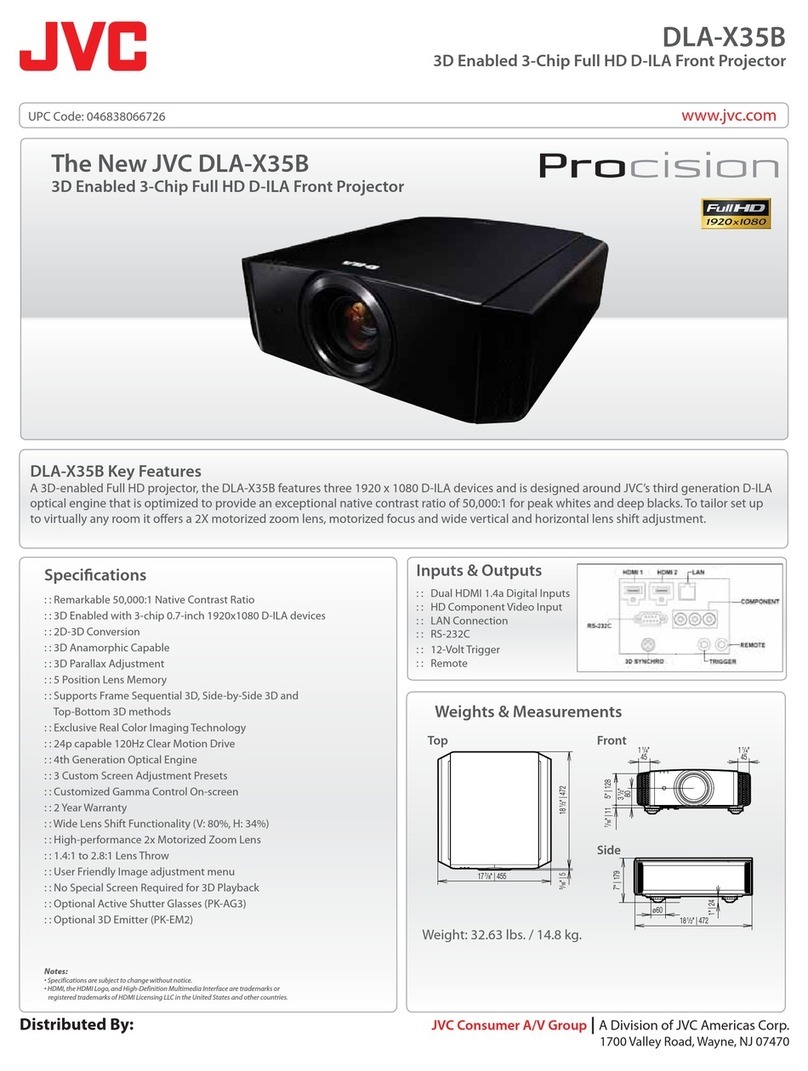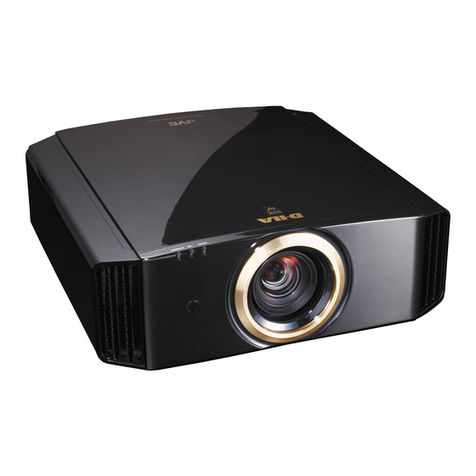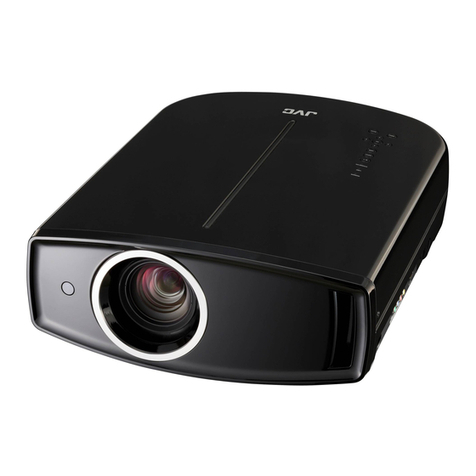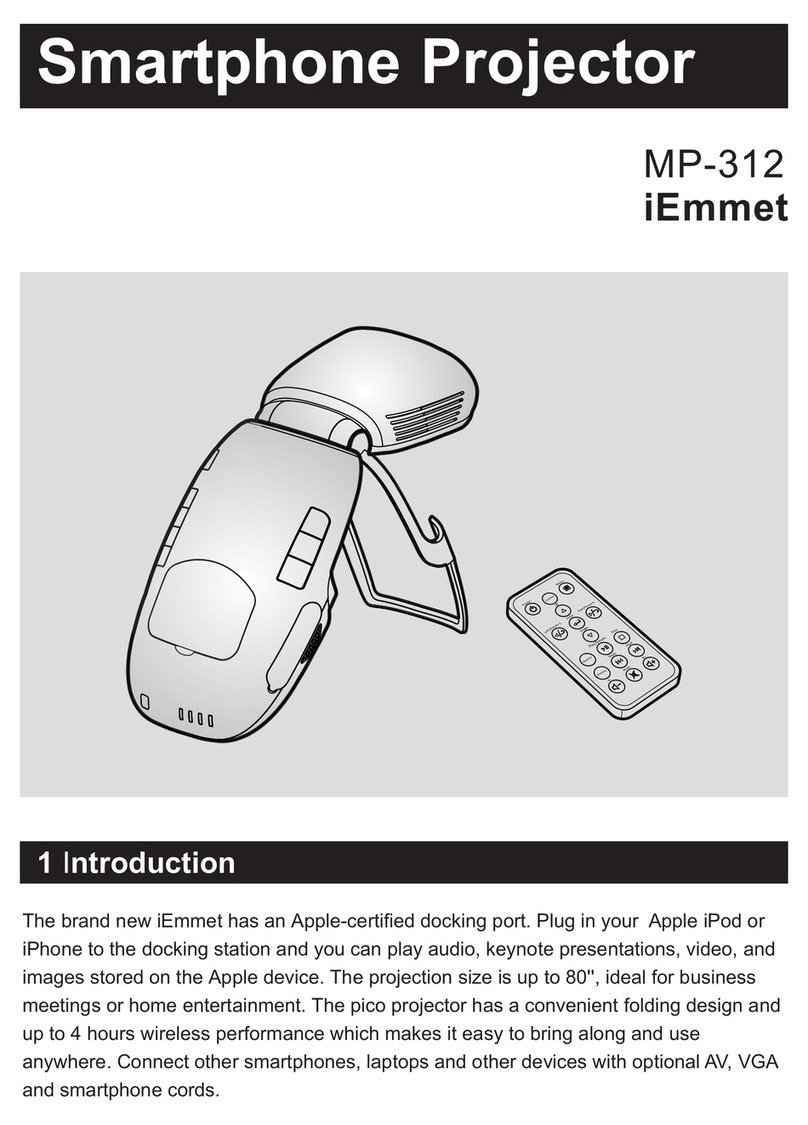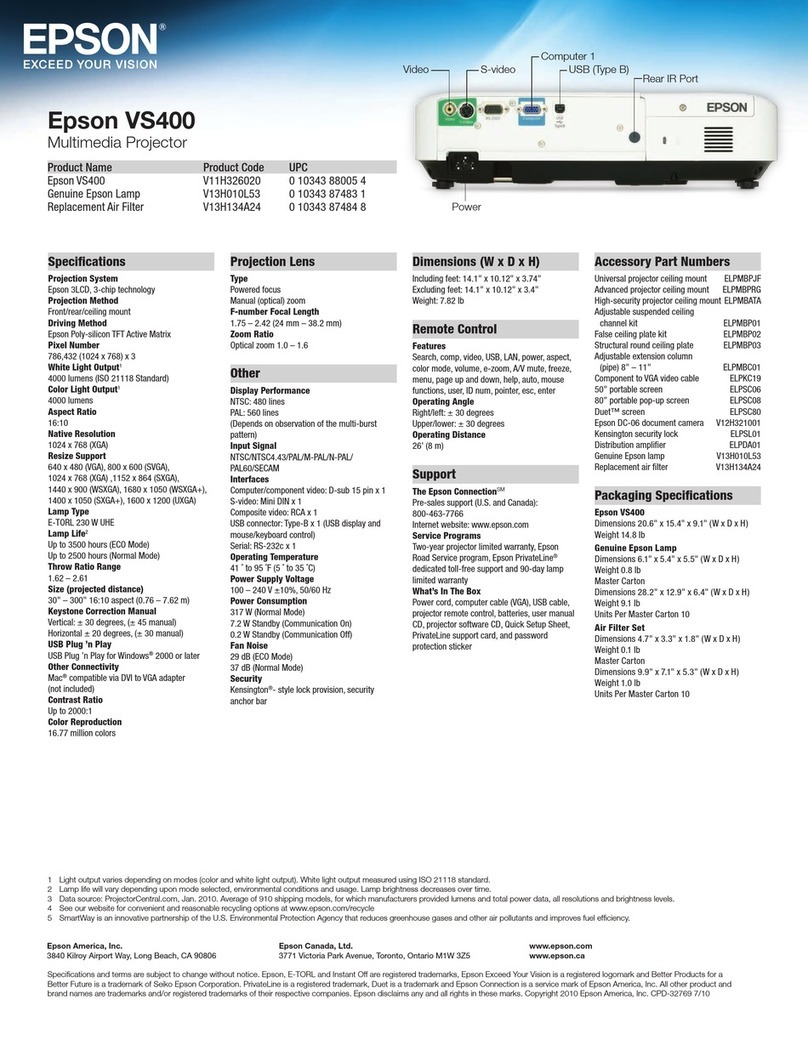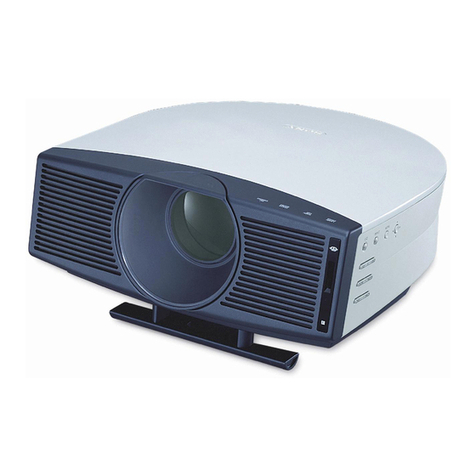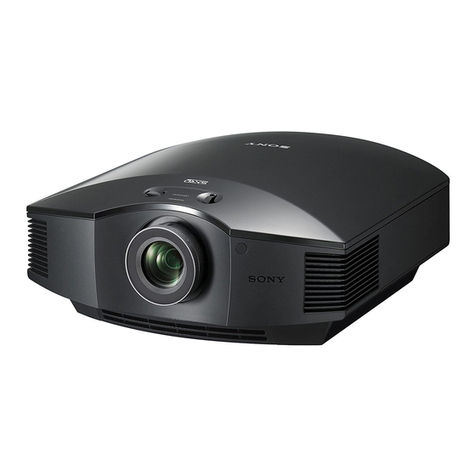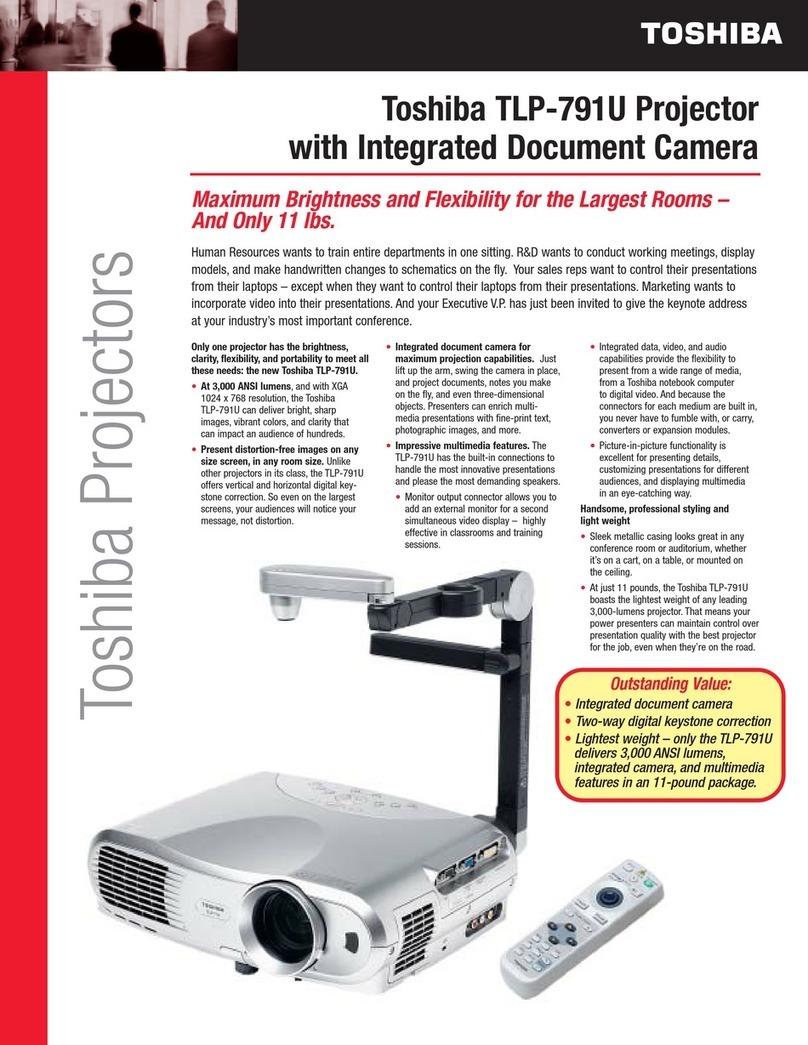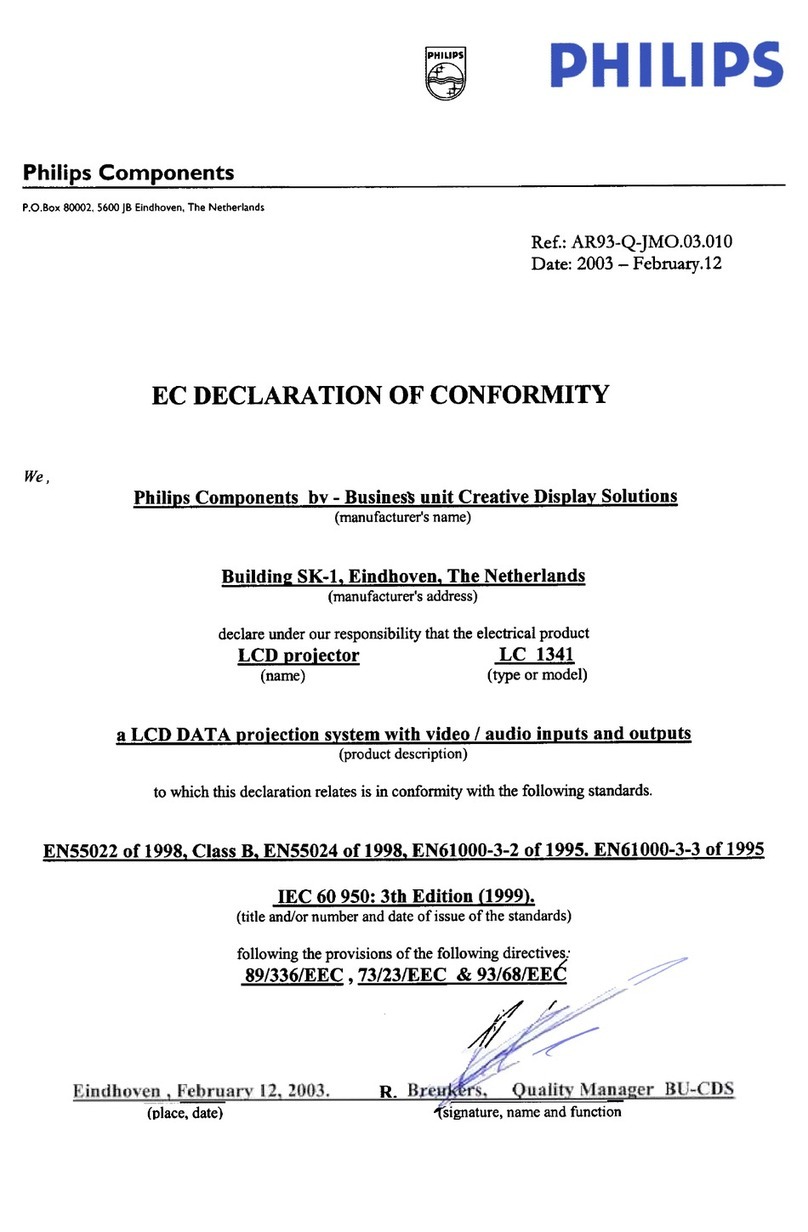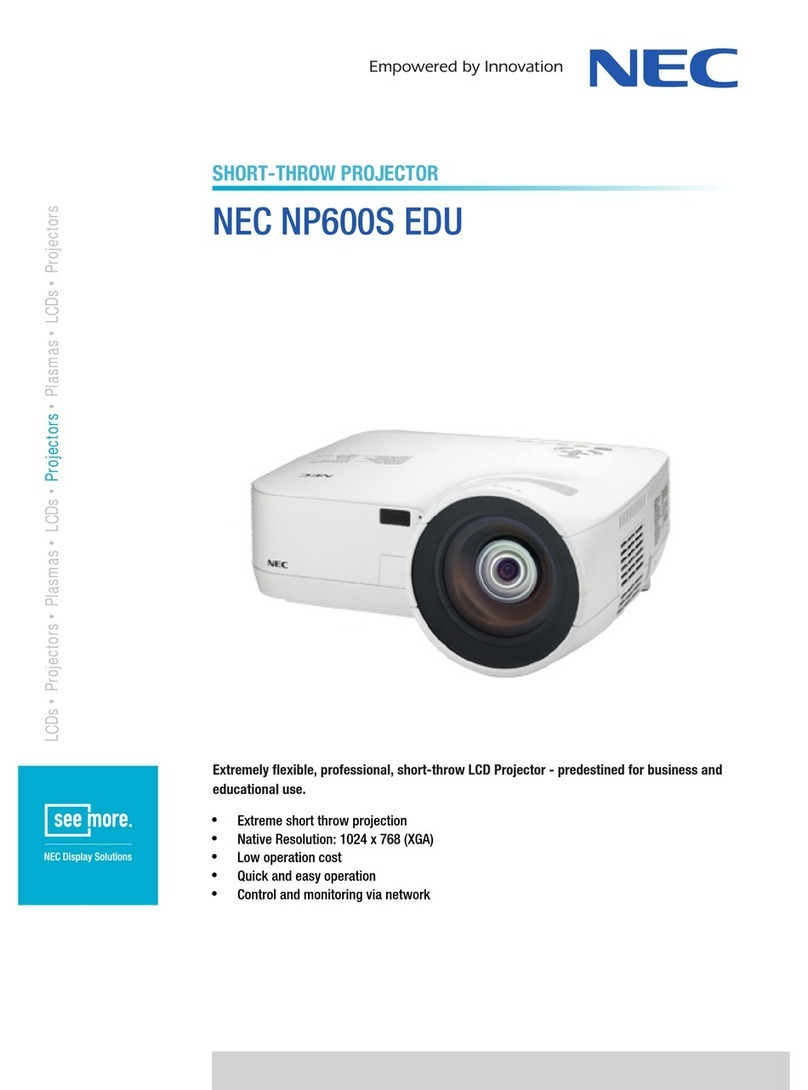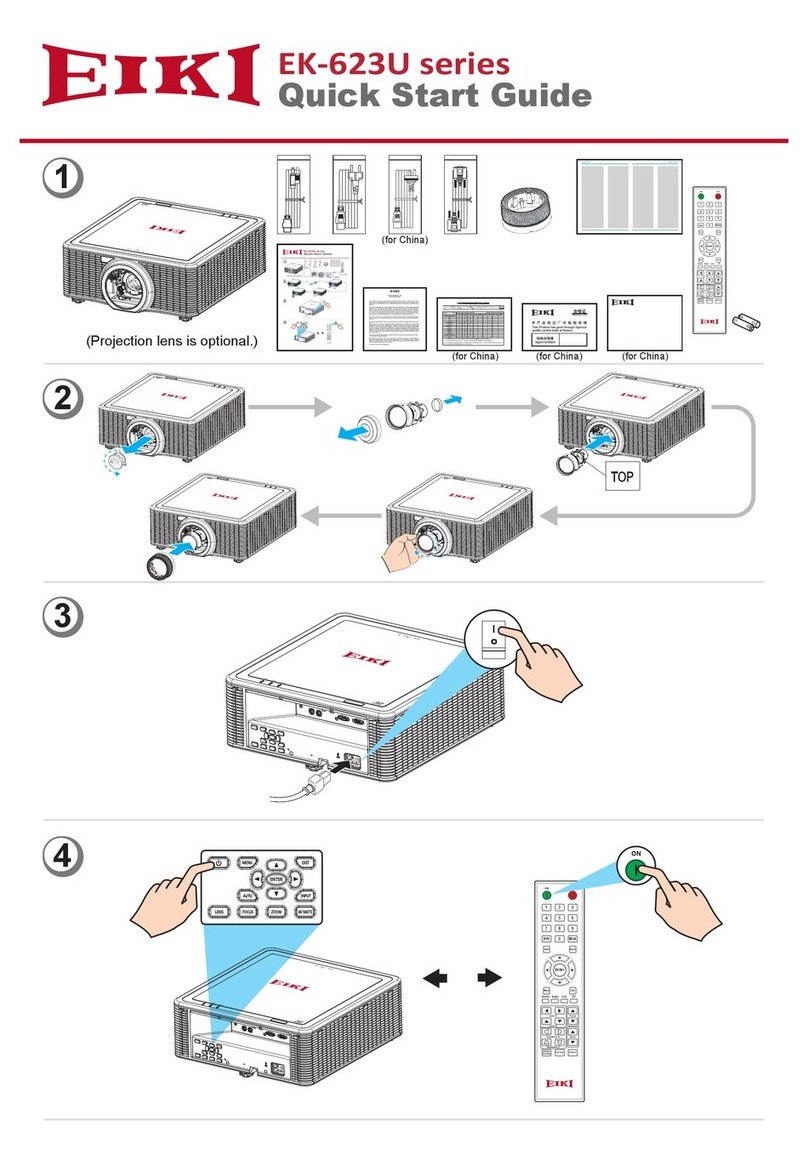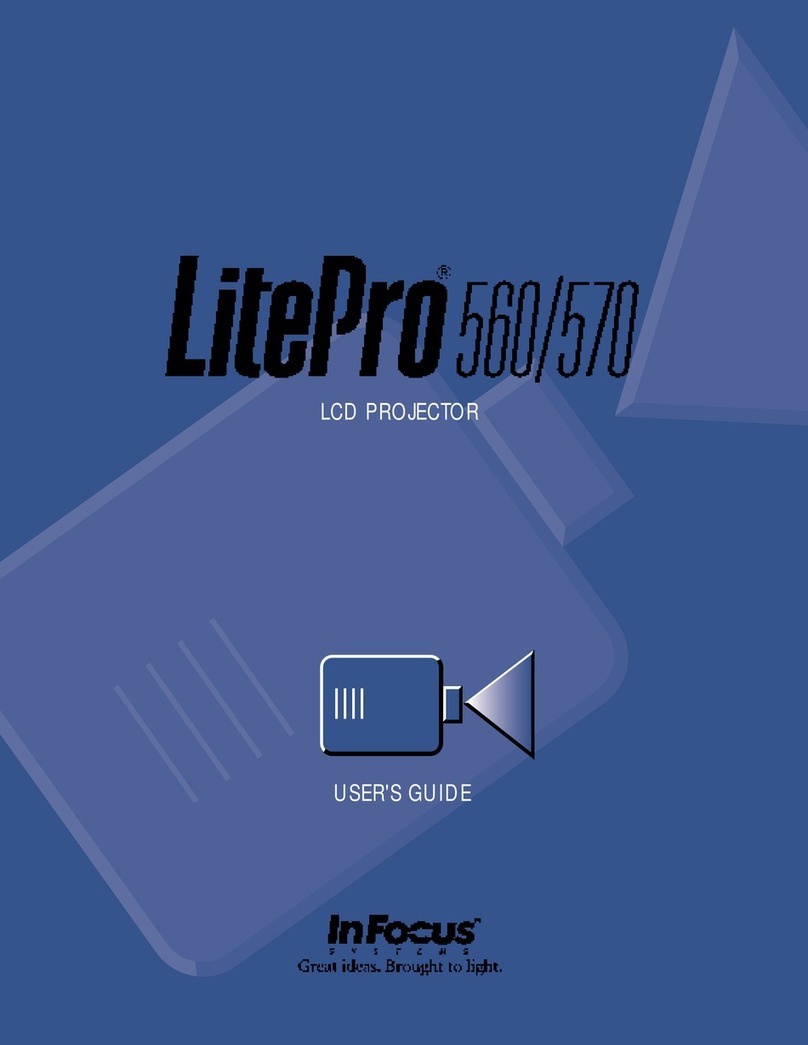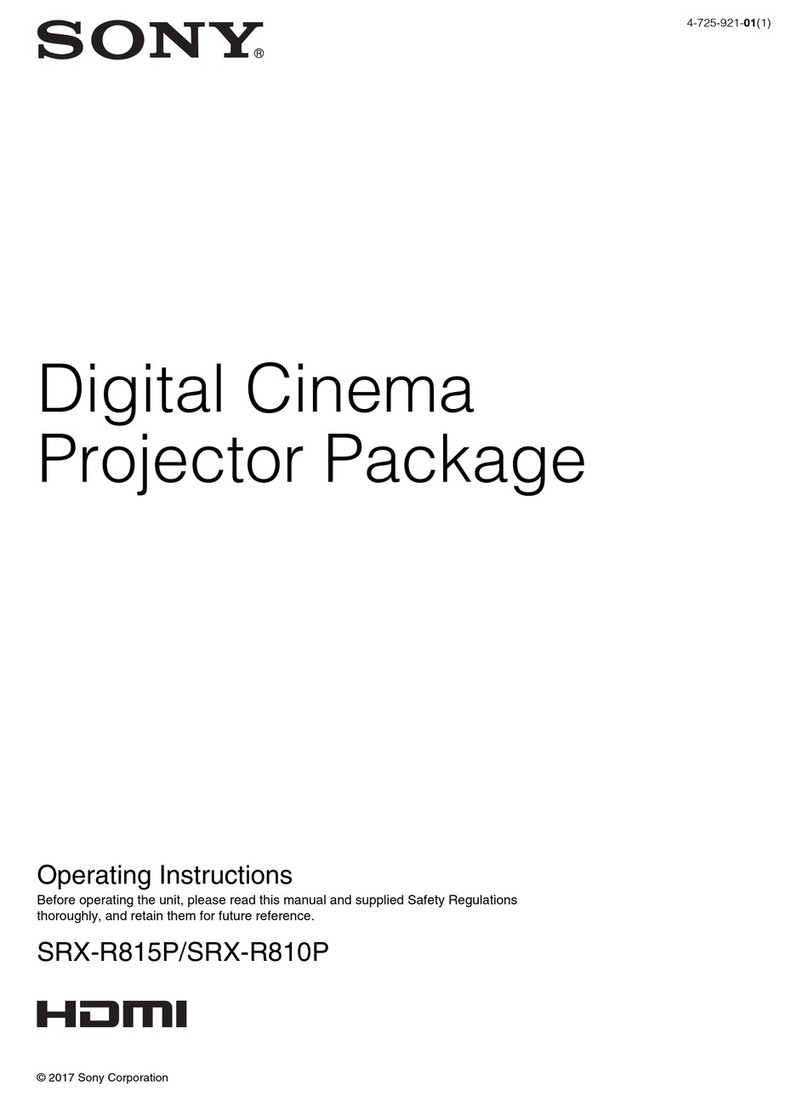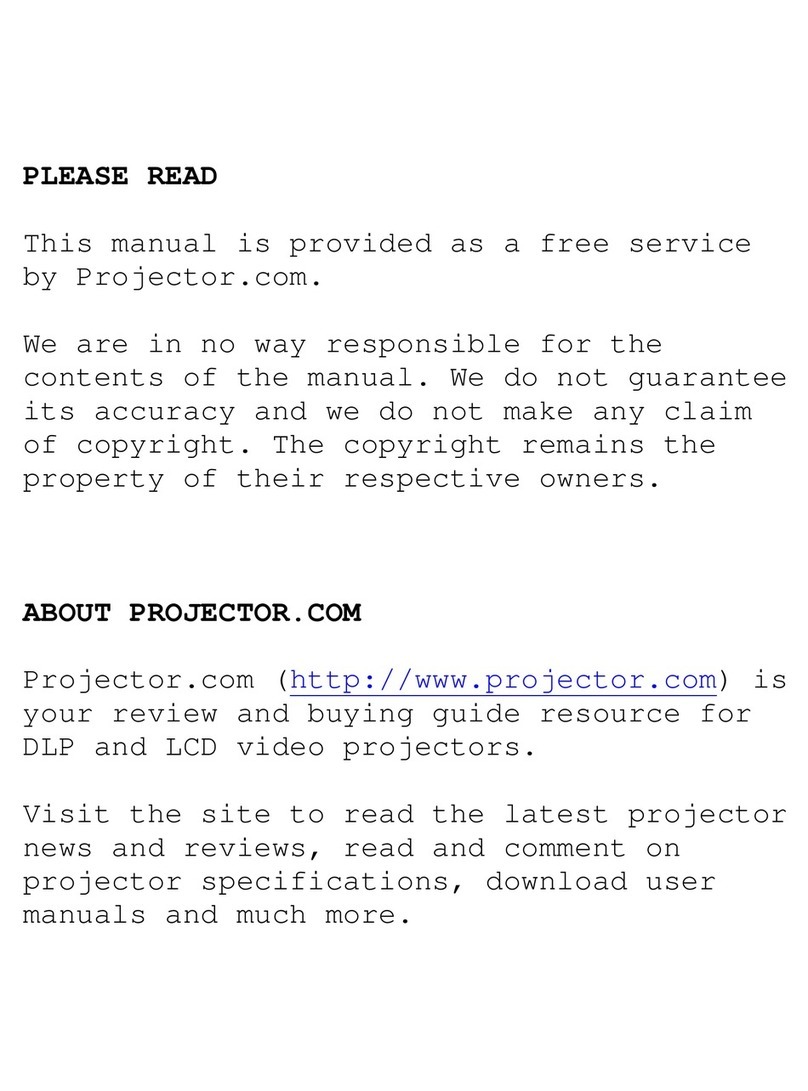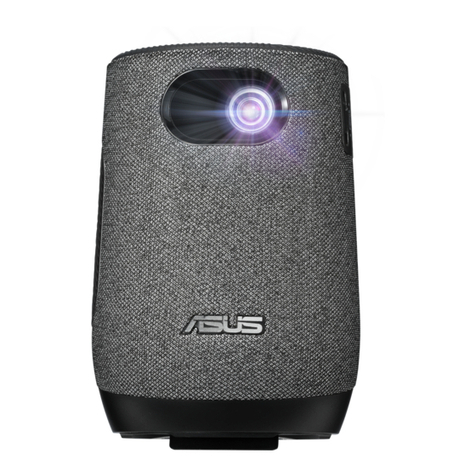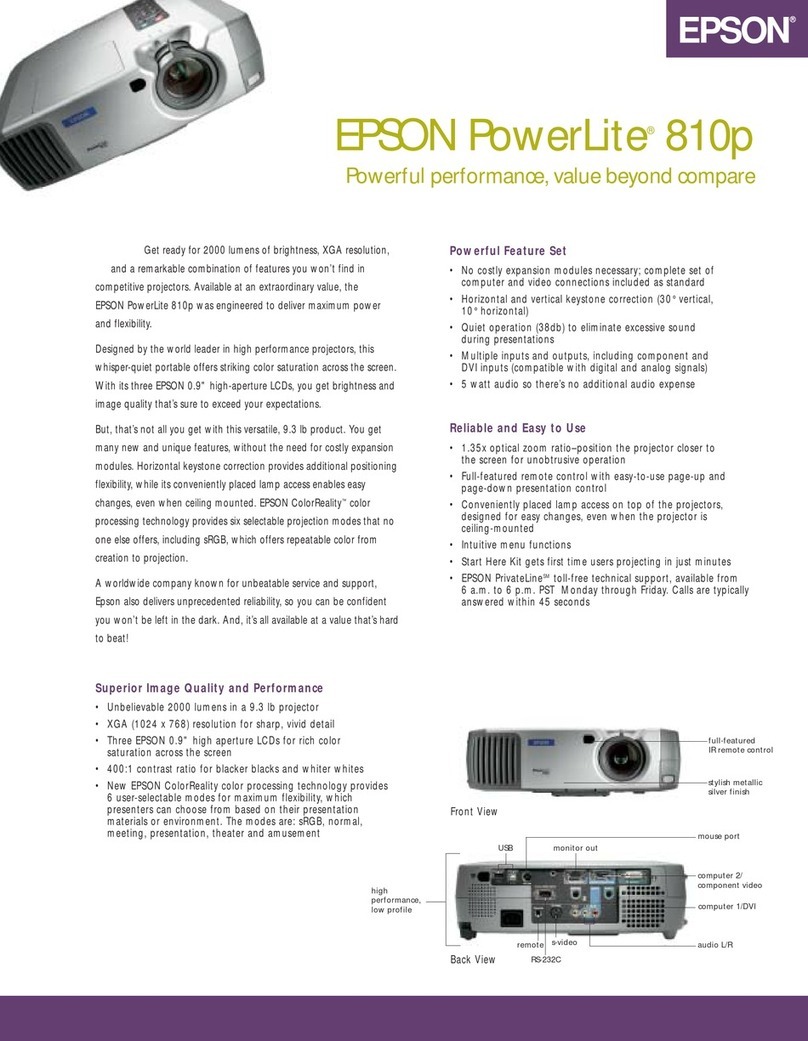High
resolution
High
brightness Tradeoff
5
Most video projectors use either the CRT method or the LCD method. However, both methods suffer from having to make
a tradeoff between high brightness and high resolution.
As shown in the figure on the left, the CRT method enlarges and
projects optically the picture projected onto the CRT with the lens.
To increase the brightness, the brightness of the CRT projection
tube itself has to be increased. However, to increase the
brightness of the image, a large amount of current is required. As
a result, beams are expanded, degrading the resolution.
©“High brightness” and “high resolution” conflict.
As shown in the figure on the left, the LCD method irradiates the
LCD panel with the lamp and its transmitted light is optically
enlarged and projected. The LCD panel is divided by pixels.
Therefore, to increase the resolution, the number of pixels has to
be increased. However, the result is that the aperture ratio
(transmittivity of the light) is decreased, degrading the brightness.
As there are lines to pass through video signals in the lattice
section, some degree of thickness is required. Also, a pixel
driving transistor is provided at the corner of each pixel.
Consequently, it is structurally impossible to increase the aperture ratio. To compensate for this, a high output light source lamp must be
used. However, the light transmission loss on the LCD panel is converted to heat energy, generating heat and damaging the LCD panel.
As a result, bright lamps must be used with great care.
©“High brightness” and “high resolution” conflict.
The D-ILA method overcomes the tradeoff between “high
brightness” and “high resolution” by using the construction as
shown in the figure on the left. As you can see, the D-ILA method
optically amplifies the video signal with the D-ILA device. The
resolution is determined by the pixel division of the panel. The
D-ILA device integrates 1365 x 1024 dots on an 0.9" (diagonal,
4:3) panel to achieve exceptionally high resolution. In addition,
the pixels are controlled from the C-MOS located at the rear, so it
is not necessary to pass a line through the gap between pixels.
This means there is no restriction on how close the pixels can be,
making it possible to achieve a high aperture ratio of 93% and
produce a clear picture without noticeable cross stripes.
The light emitted from the lamp enters the D-ILA device via the
PBS (Polarized Beam Splitter). As most light is reflected when a
picture is optically amplified, the light is not converted to the heat
on the D-ILA device. So, the D-ILA device is not damaged by the
heat in principle.As a result, a high output lamp can be used as a light source, achieving the high brightness.
©“High brightness” and “high resolution” are not in conflict.
Digital gamma correction
The brightness characteristics of the strong and weak parts of the
drive voltage (video signal) are called “gamma characteristics”.
The straighter this curve, the better the gradation expression,
ensuring more accurate gray scale reproduction.
If “gamma characteristics” are poor, gradations cannot be
expressed accurately, resulting in “flat black” or “white blurring” on
the screen. To improve this, “gamma correction” is carried out.
However, this is difficult if the device itself has an extreme
“gamma characteristic”. Because gamma correction works best
when performed at as low a level as possible so the device’s
“gamma characteristic” should be relatively mild.
The D-ILA device has a mild “gamma characteristic” because
the gradation degree is controlled with the polarized light degree.
In the past, gamma correction was done with analog processing.
With the D-ILA, the signal is digitized and corrected using precise
10 bit processing to ensure accurate gradation reproduction close
to that of CRT.
(With the LCD method, the gamma curve is not linear so
reproduction of gradations in near-white or near-black areas tends
to be difficult.)
How does the D-ILA method avoid the trade off between “high
brightness” and “high resolution”?
D-ILAdevice PBS
(Polarized Beam Splitter) Projection lens
Screen
Lamp
Input signal
Input signal Projection lens
Screen
CRT
Lamp Video signal
LCD panel Projection lens Screen
D-ILA Method Present Condition and Subject
4
D-ILA features
High resolution
nHigh-density reflective device (D-ILA device)
1365 x 1024 dots, aspect ratio of 4:3
1280 x 1024 dots, aspect ratio of 5:4, S-XGA full
resolution
High brightness
nHigh aperture ratio (93%)
nHigh reflective ratio device (D-ILA device)
nNewly-developed 520 W xenon lamp
1000 ANSI lumens
High contrast
nContinuous use of vertically-aligned liquid crystals
established with the ILA device
More than 250:1
350:1 achieved with the DLA-G20
High picture quality
n10-bit digital gamma correction
Faithful reproduction of dark and bright parts
Excellent gradation reproduction
nNewly-developed xenon lamp
Faithful color reproduction
Excellent operability
nReady for various sources:
ADPC (Adaptive Digital Pixel Conversion) circuit for multi
source, optimum pixel density conversion for data,
natural picture and moving picture, and high-speed
digital processing
nMaintenance free:
Maintenance needs only lamp replacement which the
user can perform.
nPortability:
Thanks to the compact, high-density D-ILA device, this
high-performance projector is remarkably small (smallest
in the S-XGA full resolution class) and lightweight
(14 kg), making it extremely portable.
The D-ILA device has been designed to overcome the
trade off between “brightness” and “resolution” that
plagues conventional CRT and LCD projection methods.
With D-ILA, instead of boosting one at the expense of
the other, high resolution can be maintained while the
light output of the main unit itself can be strengthened.
As a result, large-screen projection capability can be
provided. JVC likes to refer to the D-ILA method as “the
third method”.
mCRT method
mLCD method
mThe third method D-ILA
D-ILA features
